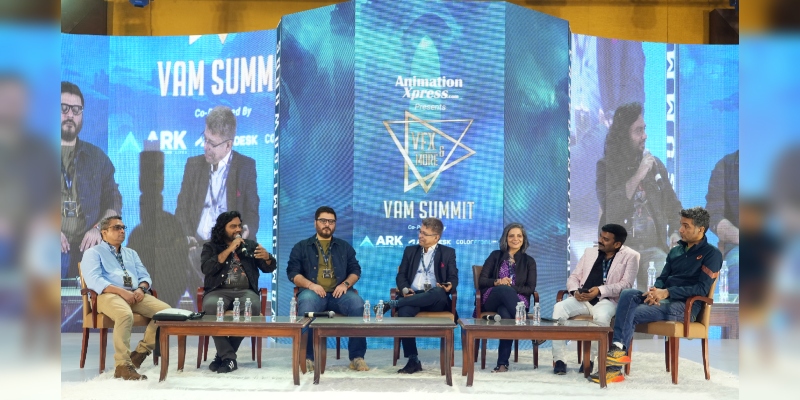
The VAM Summit & Awards took place on two days in Mumbai. It saw masterclasses, panel discussions, insightful sessions and VAM Awards. A panel on the first day shed light on the Art of Filmmaking with VFX.
Moderated by Indian Television Dot Com Group founder, CEO and editor-in-chief Anil NM Wanvari, the panel comprised of Rose Audio Visuals managing director Goldie Behl; yFx studio head Sherry Bharda; DNEG India environment head Sameet Gupte; PhantomFX founder, CEO & VFX supervisor Bejoy Arputharaj; director of photography/director Manu Anand and director Vishal Furia.
VFX has changed filmmaking to a great extent over the years. Earlier, films used VFX to fix things in post-production. Now, makers plan the use of visual effects before beginning the shoot. How has this process evolved? “Right now we are in a glorious age of visual effects,” said Sherry Bharda. “I think OTT has revolutionised it. You are bringing scale to enhance your film and stories. India has suddenly become the focus of everybody’s attention. It’s the place where the talent is. We are grooming our talents fast. Talents are now getting the money they deserve. Pipelines are getting restructured. So it’s a great age today.”
We’ve seen some VFX-heavy films perform well. What can this success be ascribed to, Wanvari asked. Giving the example of the film Forrest Gump, Vishal Furia said, “It is always a story and storytelling that take precedence over everything else.” He believes that people are interested in watching VFX-heavy films, but is sure that they would also be interested in small-budget films with a brilliant story, that use VFX only to take the storytelling forward. Adding to this, Goldie Behl said that he believes in minimalistic use of VFX. “I believe in live shooting as much as possible and to enhance it with VFX,” he said.
What should makers keep in mind while using VFX? DNEG’s Sameet Gupte said that the achievement for a VFX artist is when a VFX shot is not interpreted as a VFX shot. Bejoy Arputharaj revealed that they go through the script, analyse it and find out ways they can achieve the director’s vision. “We go for mix of live shoots and CGI. But some shots require full CGI, and we discuss everything with the director,” he said. Behl added that makers should look at how VFX is communicating a certain emotion or adding to the narrative of the story.
About the role of cinematographers in storytelling, DOP Manu Anand said, “Right now, cinematography department and VFX department work in tandem,” said. “We plan a lot. That allows us to be efficient, but that doesn’t mean we don’t improvise on the set.” Gupte and Arputharaj added that filmmakers are gradually understanding that storyboarding and pre-vis are important for VFX-heavy films.
The industry’s mindset needs to change when it comes to filmmaking, Bharda highlighted. “VFX has become so integral to films. VFX needs to be given a seat at the table with the rest of the HODs.” VFX has always been associated with post-production and fixing things. Bharda has a different take though. “Fix it in pre. Don’t use VFX as a band-aid fix or jugaad fix,” she said.
The session ended with the panelists answering audience’s questions on whether VFX increases budgets or saves cost, with all of them being of the opinion that if used effectively, it saves cost.

